Biographical Notes reCharles A. (Chuck) StonePage 3 of 3 Pages, of Chapter 4,HOMECOMING |
||||||||||||||||
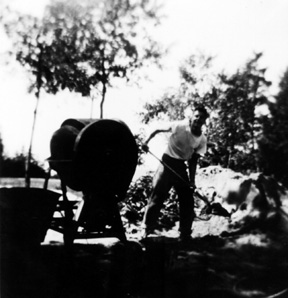 |
||||||||||||||||
| Bob Brown needed living quarters closer to his work at the hotel, so we decided to build him a house on the property, down by the river. Our reasoning was that his family would live in it until he was able to build one of his own. When he didn’t need to occupy the house anymore, we would rent it to tourists in the summer and school teachers in the winter. As it was conceived, this was truly to be a do-it-yourself project. After selecting a Better Homes and Gardens plan, and making a few modifications to suit our needs, we began to dig into the soil along the river, build footings and poured concrete, mixed entirely with a Sears cement mixer with a discarded washing machine electric motor. This was a remarkable experience for two guys who had built little more than a birdhouse before. We had cut our teeth building in some furniture in the hotel, but this was a bit larger project. Keeping up with our hotel and cabin duties, and building this house made a solid claim to our daylight and evening hours. Without boring you with the details here, I will try to put enough related photos of the results of our efforts on this web site story to let you see why we felt like celebrating when the job was finished. It was a great experience. The house still stands on that beautiful riverside location.
Special Note: In late January, 1949, we had a distinguished guest at the hotel. The special guest was “Cedric Adams,” in those days, the premier radio news and EVENTS commentator for the North Central U.S., broadcasting over WCCO Radio in the Twin Cities. While chatting in the hotel lobby and parlor area, he mentioned the new home he had under construction. I told him we were doing some do-it-yourself construction ourselves. He asked for a tour of the house. We walked him through the house and after finishing the tour he exclaimed “Here is my column for next Friday.” He grabbed his portable typewriter, sat down at one of the parlor desks and began to type at a great speed. If you would like to review what he wrote, you can click here and then return to this page. About the time we were finishing up the house project, we were getting into a bind with our laundry operation. We needed to expand our resources from the limited technology we had been using. As we were pondering this issue, we had a guest in the hotel who was in town installing laundry equipment in the new hospital being built in the community. He invited me down to have a look at this commercial grade laundry equipment. I fell in love with it on the spot. He assured me he could ship me the same equipment in short order. After reviewing our space, plumbing and electrical needs we chose to go ahead with the project. Unloading and moving the equipment into the back basement entrance of the hotel, we realized the washer would not go around the corners and through the existing openings. Even though it was midwinter and the frost went down at least eight feet into the ground, we jack hammered a hole against the back basement wall, cut through the wall and moved the equipment in through the hole, patching it back up as fast as possible to keep old man winter at bay. This washer, extractor and dryer system, in three separate parts, was really something. When you dumped the washer the water came out in a big “whoosh” and down the drain. We had to make a number of unexpected adjustments to make all of this work. We connected the back furnace with the front furnace, using circulating pumps, to move hot water through the hotel radiator systems. The back furnace became one big water heater for the thirsty washer and the other hotel needs. It was exciting. After getting the bill for all of this, I decided we needed to do some outside laundry work to pay for the machines and installation modifications. We were soon washing hotel and cabin linens in a few hours where it had previously taken days. |
||||||||||||||||
|
|
||||||||||||||||
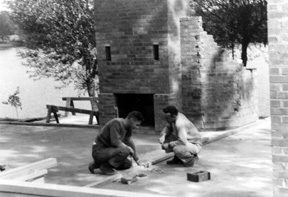 |
||||||||||||||||
|
|
||||||||||||||||
 |
||||||||||||||||
|
|
||||||||||||||||
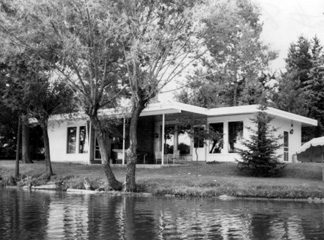 |
||||||||||||||||
|
|
||||||||||||||||
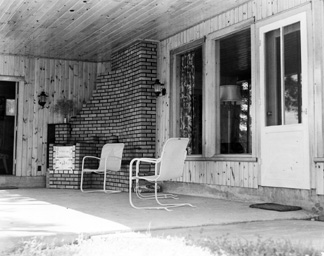 |
||||||||||||||||
|
|
||||||||||||||||
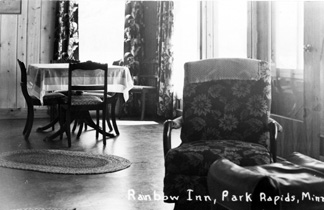 |
||||||||||||||||
|
|
||||||||||||||||
| We had technology to spare. We began doing linen and towel washing for the other hotel in town and a number of the new motels that were popping up. People begged us to do family washing as they were not happy with the other services available. We tried to respond to this need, but soon found that it cost more to do than we were prepared to invest. We quickly went back to providing only hotel and motel services. The real benefit, that we had not predicted, was this equipment reduced our employee requirements by one and a half staff members, which was sufficient to make the payments. |
||||||||||||||||
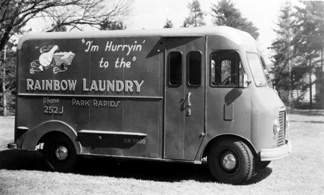 |
||||||||||||||||
|
|
||||||||||||||||
| Simple math, once I got it through my head. I have always tended to do things the hard way, believing that just by working hard, things will turn out OK. This is just not true! |
||||||||||||||||
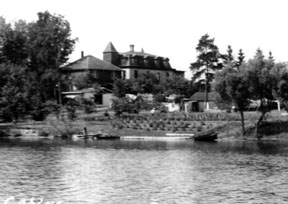 |
||||||||||||||||
| As we moved through 1949 and into 1950 there were some realities creeping into our efforts to succeed. We took out a second mortgage loan with an insurance company to bring our debt load under control. People who had cash on the line, left over from their WW -II industrial profits, were showing up in town, building new motels or resorts down the street and on nearby lakes. Additionally, developments in communications from seller to buyer were changing the way salesmen were moving through the area. The need for their face-to- face services was diminishing by the month. With deep regret I realized that our future prospects were not healthy enough to support Bob and his growing family and still pay the bills. He was soon occupied with building another do-it-yourself home for his family, just across the river and then took other employment. He did a wonderful job of building his own home, but I really missed his company and expertise. |
||||||||||||||||
|
|
||||||||||||||||
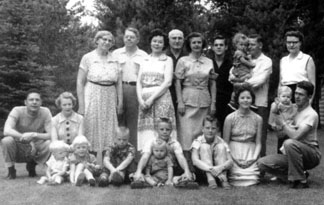 |
||||||||||||||||
|
|
||||||||||||||||
| Suddenly there were events in the Far East that quickly became what we now call the Korean War. As we moved toward Christmas of 1950, I realized that, although Nell and I now had a new daughter, our future hopes for this business were in increasing jeopardy. Beyond this, there was that lingering sense of guilt that I had never fulfilled my duty commitment in WW II, nor really found out if I could be an effective military pilot, or not. As we turned the calendar to the year 1951, I called Colonel Don Wilhelm, who was by then commander of 10th Air Force, at (I believe) Selfridge Field, MI. I asked him if he could accept me for voluntary recall. He asked me why I was so crazy to want to leave such good trout fishing behind, but agreed to try and do so. By February, 1951, I had orders to report for a physical exam and processing to active duty at Chanute Air Base, IL. Nell and our daughter, Sandy, moved, temporarily, into the home-built home on the river. My Mom and Dad stepped back in to operate the business until my future plans cleared up. While undergoing processing, I learned they were going to make me a Radar Officer at a remote site at Sault Ste. Marie, MI. I immediately called the officer in charge of recall assignments at 10th AF Headquarters and told him I wanted to be recalled on flying status. He agreed that made sense and my orders were changed to Perrin Air Force Base at Sherman/Dennison Texas. This was one of the the new USAF’s primary flying training bases. I put on my blue suit and was on my way. |
||||||||||||||||
|
End of Page 3 of 3 Pages, Chapter 4 — Go to Chapter 5 Click below to select a destination Go to Page 1 — 2 — 3, this Chapter Chapters 1 — 2 — 3 — 4 — 5 — 6 — 7 — 8 — 9 — 10 — 11 — 12 — 13 — 14 |
||||||||||||||||